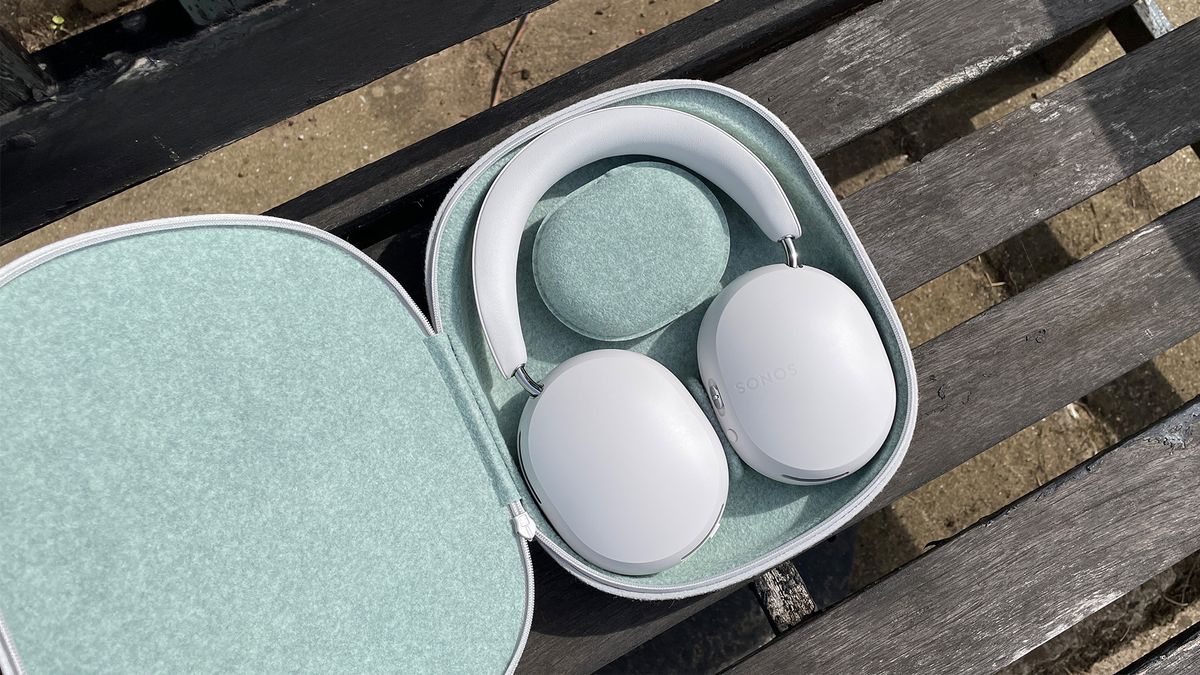When you’re a company like Sonos, which has pretty much nailed the soundbar, wireless speaker and multi-room markets, what do you do next?
You set your sights on a whole new category and launch a brand new product, of course – in this case the Sonos Ace wireless headphones. Rumours and rumblings about a pair of cans to complement the rest of the Sonos family have been doing the rounds for a few years now, and when you think about it, it’s not a huge leap. If Sonos can introduce a couple of unique selling points for its customers while mastering the sound quality side of things, then it could be quite the success story.
But Sonos is entering an area of the market that isn’t for the faint-hearted. Some of the brands in the space are huge hitters and have been making headphones before Sonos was even born. The likes of Apple, Bose, Bowers & Wilkins, Sennheiser and Sony all have sensational Bluetooth, over-ear noise-cancelling headphones that we have tested and rate at five stars – and they won’t make life easy for the Sonos Ace. Let’s see how they stand up to scrutiny.
Price
The Sonos Ace wireless headphones cost £449 / $449 / AU$699. We expected Sonos to be gunning for the expensive Apple AirPods Max (£549 / $549 / AU$899) but this is smack bang in the middle of Sony and Bose territory too.
The Award-winning Sony WH-1000XM5 retail for £380 / $399 / AU$550, while the Bose QuietComfort Ultra Headphones are yours for very similar money at £450 / $429 / AU$649. Both the Sony and Apple headphones have come down in price since launch and we are starting to see slight discounts on the Bose, so it’s a very crowded market with options at, above and below the money Sonos is asking.
Design & Comfort

Sonos has a reputation for designing minimalist products that blend into the home anonymously without drawing attention to themselves (something that either suits you perfectly or you might find a tad bland), but we think the Ace are nicely made with a hint of style too.
We find them to be a bit of a cross between the WH-1000XM5 and AirPods Max with earcups that are more streamlined than Sony’s with a slightly squarer appearance, like the AirPods Max – albeit not as flashy. At 312g they are lighter than the AirPods Max (384.8g) but a touch heavier than the Sony WH-1000XM5 (250g), and you can feel the difference in hand.
Sonos Ace tech specs
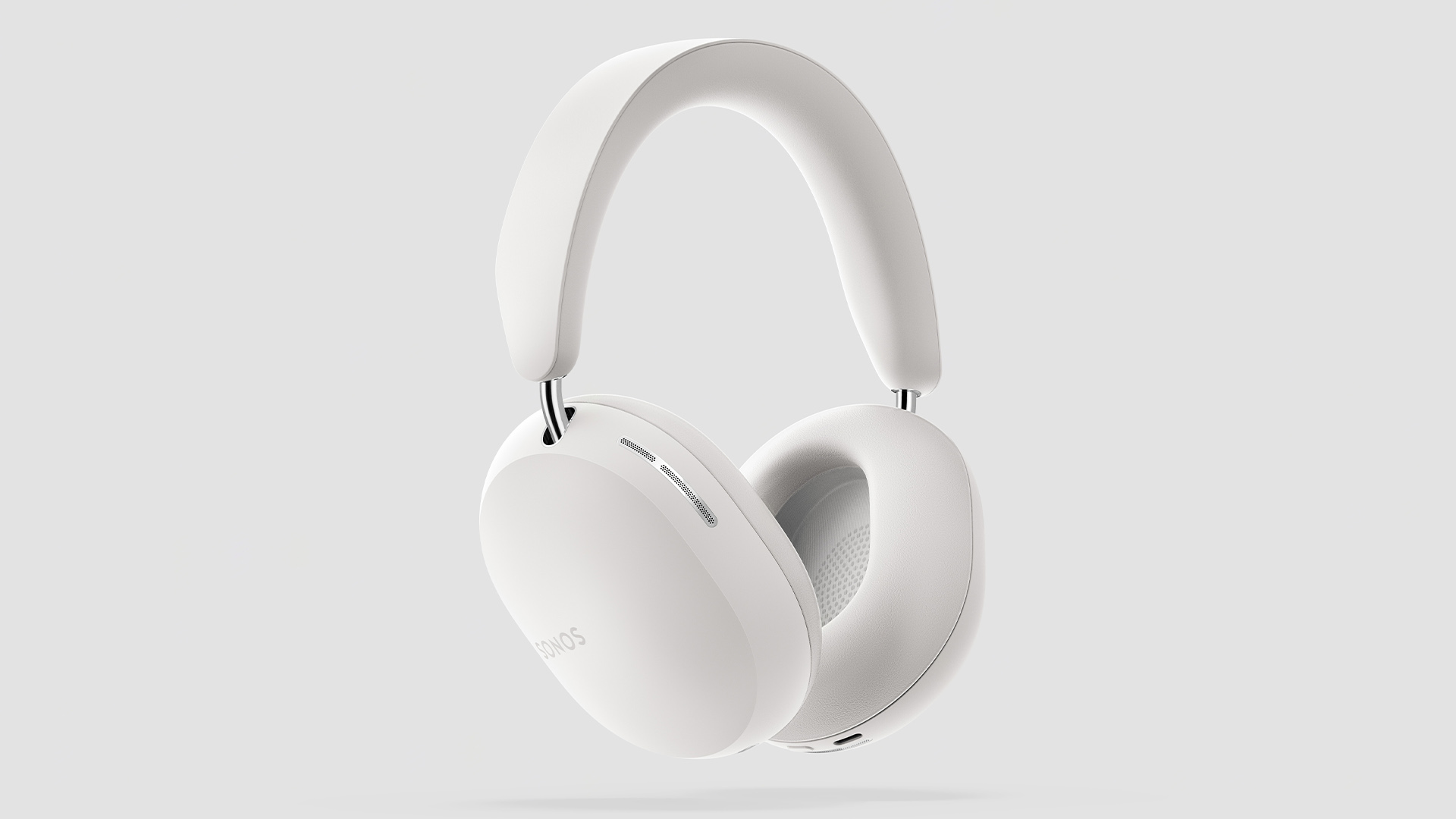
Bluetooth 5.4
Codec Support SBC, AAC, AptX Lossless,
Noise-cancelling? Yes
Battery Life 30 hours playback (ANC on)
Finishes x 2 (black, soft white)
Weight 312g
The earcups feel smooth to the touch and are coated in an anti-fingerprint finish that we couldn’t get to tarnish when handling. The Sonos logo emblazoned across one earcup is meant to be subtle and shimmers only when it catches the light, but it is rather large when it does.
The earpads use memory foam coated in a layer of vegan leather (polyurethane) that feels quite plush, although you get a bit more cushioning from the Sony and Apple models. The adjustable headband uses a firmer structure of the same materials, and we find them comfortable enough.
A couple of members of the team felt like there wasn’t much room for their ears to breathe in the cups, and found they heated up quite quickly, although those with smaller heads and ears found this wasn’t really an issue.
Those with smaller heads should find they fit especially well, and the clamping pressure is nicely judged. To adjust, simply slide them along the stainless steel yokes.
We particularly like how the hinges and joints are concealed in the body of the headphones; it offers a more elevated look and ensures those with long hair won’t get it caught while moving them into position. As is the trend now, the earcups swivel flat but don’t fold up, while the replaceable earpads are attached to the frame by strong magnets.
For the Ace, Sonos has resisted the temptation to add touch controls, and in our opinion, they are all the better for it.
On the left earcup is a button for power and Bluetooth pairing, and the right earcup has a single button to cycle through the noise cancelling modes. It also has a multi-functional slider/button (Sonos calls it the “content key”) that is the real star of the show. You can slide it up and down to change the volume and press it a couple of different ways to control playback (pause, play, skip, answer calls etc). Press and hold to ‘swap’ music from a connected Sonos Arc soundbar to your Ace headphones and vice versa (more on this below). It’s quick to respond to pressing and sliding, even if it feels a tad cheap and plasticky.
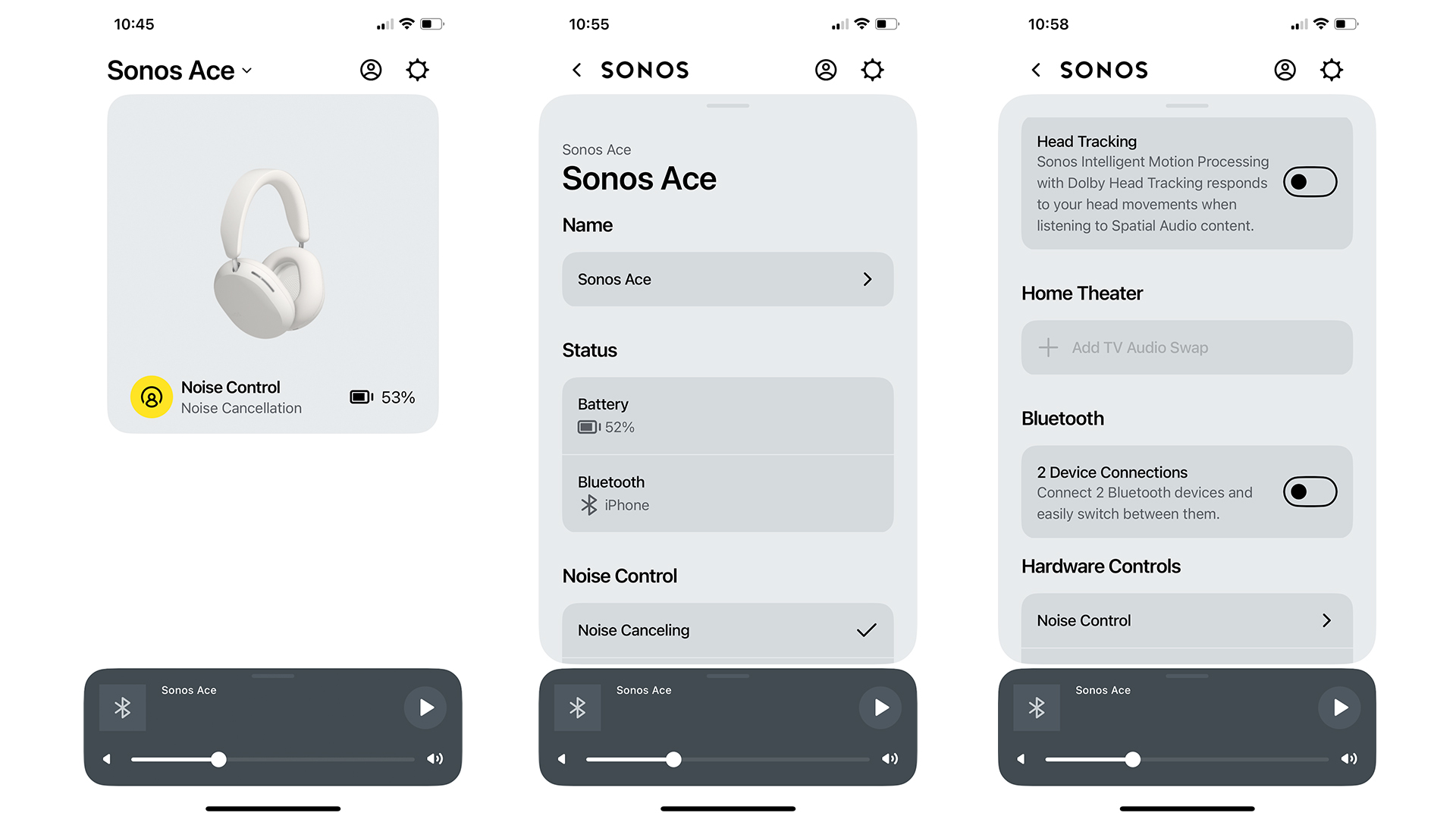
The Ace headphones come in two matte finishes – black or soft white – with the metal accents’ intensity differing slightly depending on the finish. Another nice touch is that the mesh in each earcup is a different shade to more clearly distinguish between left and right.
You get a matching travel case with a smaller, magnetic travel pouch inside that holds the USB-C charging cable and USB-C to 3.5mm cable that both come in the box. (You can connect them to a laptop via USB-C and the headphones support sample rates of 16-bit/48kHz.) The positioning of the pouch also helps guide the headphones into position when you store them away.
Our review pair is soft white and boasts a matching white carry case with a pale-green interior that mirrors the fabric colour in the right earcup. The case seems quite susceptible to being marked, though, and it starts to show scars after just a week or so of carrying it around in our bag.
Features
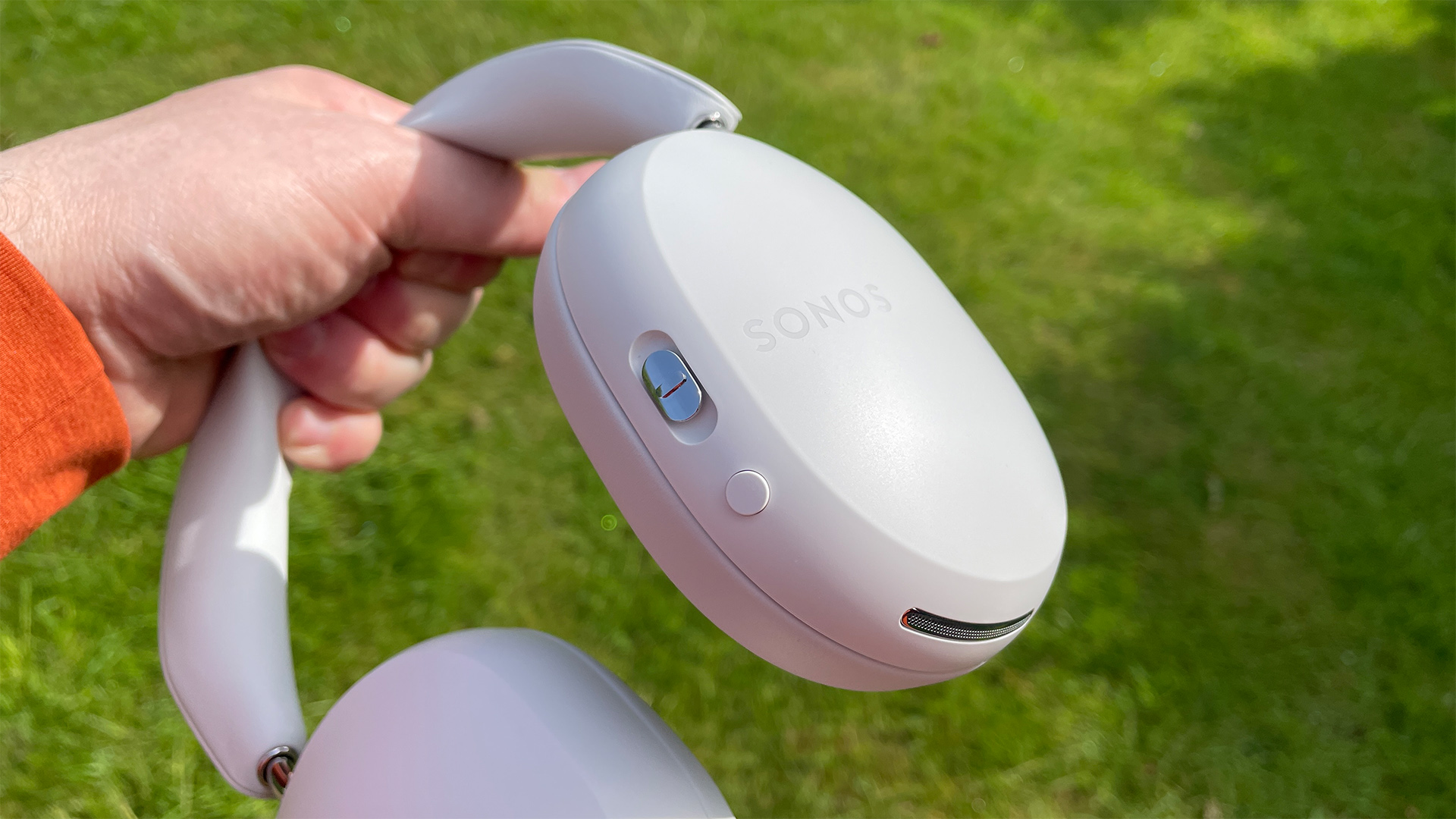
The Sonos Ace are equipped with Bluetooth 5.4 and can play lossless audio from compatible sources thanks to Snapdragon Sound’s aptX Lossless support. The Ace don’t support next-gen codecs such as Auracast and LE Audio yet, however; Sonos says it is tracking how these codecs are developing and will adapt accordingly once they are used more widely. At this stage of their development, we don’t think this is the end of the world.
Battery life is always a big deal, and you get 30 hours of playtime on the Sonos Ace, with Bluetooth and ANC turned on. In comparison, the Sony XM5 are also good for 30 hours, but the AirPods Max lag behind with just 20 hours while the Bose QuietComfort Ultra Headphones offer 24 hours. A fast charge function on the Sonos gives you three hours of juice from just a three-minute charge.
Other essential headphones features include wear detection, which automatically pauses music when you remove the headphones and resumes playing when you put them on. Weirdly, this feature didn’t work straight out of the box with the Ace starting to play ball only midway through our time with the headphones.
Bluetooth Multipoint is also available, so you can connect to two sources simultaneously. During testing we found it worked well, with the headphones quick to pair when turned on and relatively quick and consistent when jumping from one connected device to another, e.g from a MacBook Pro to iPhone.
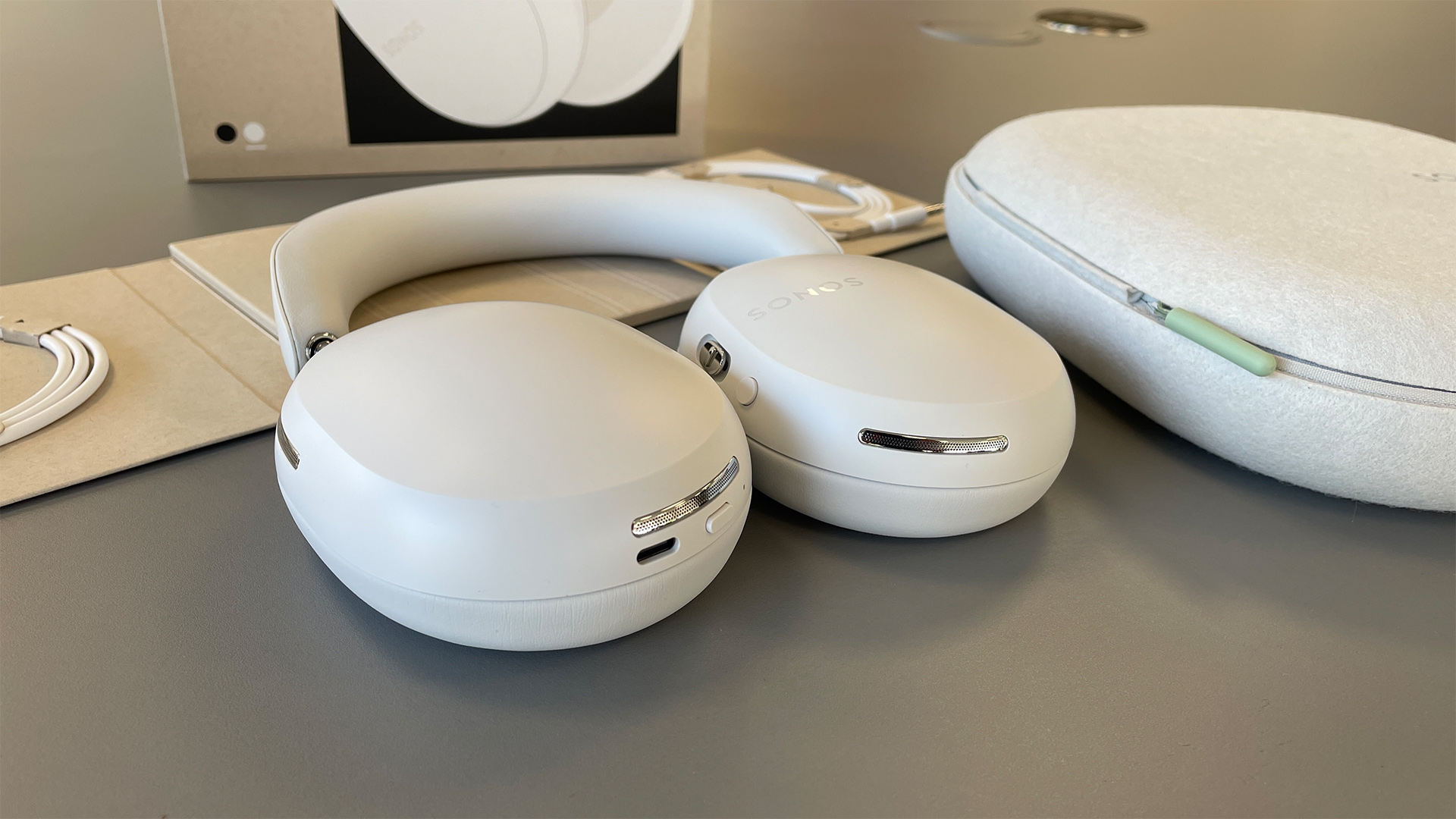
The headphones also support spatial audio with dynamic head tracking across music and movies with apps that support Dolby Atmos. Dolby Atmos and 360 Reality Audio tracks in Apple Music, Amazon Music, Tidal and Deezer are all supported, so you can get your spatial audio kicks no matter what popular streaming service you use.
The Sonos app plays a big part in Ace ownership too. Here you can turn spatial audio on and off, and there are settings for Bass, Treble, Balance and a Loudness setting designed to boost bass and treble at low volumes, although we generally recommend turning this off.
Unlike some rivals, such as the Bose, there’s no way to alter the intensity of the active noise cancelling; so it’s either on or off – or you can engage Aware mode if you want to hear your surroundings.
Some Sonos fans might be disappointed to learn that the Ace are not wi-fi headphones as some had hoped – they connect to mobile devices via Bluetooth only. That means you can’t connect them to the wider Sonos ecosystem or to your Era 100 speaker as many have long hoped. Sonos says the team has thought hard about full wi-fi headphones, but for this “entry” headphone product, it focused on the user experience and the way in which Bluetooth is more widely supported on mobile devices and offers seamless integration. There actually is a wi-fi chip in the Ace, but it is only used for the TV Audio Swap and TrueCinema features. Which brings us to…
TV Audio Swap and TrueCinema
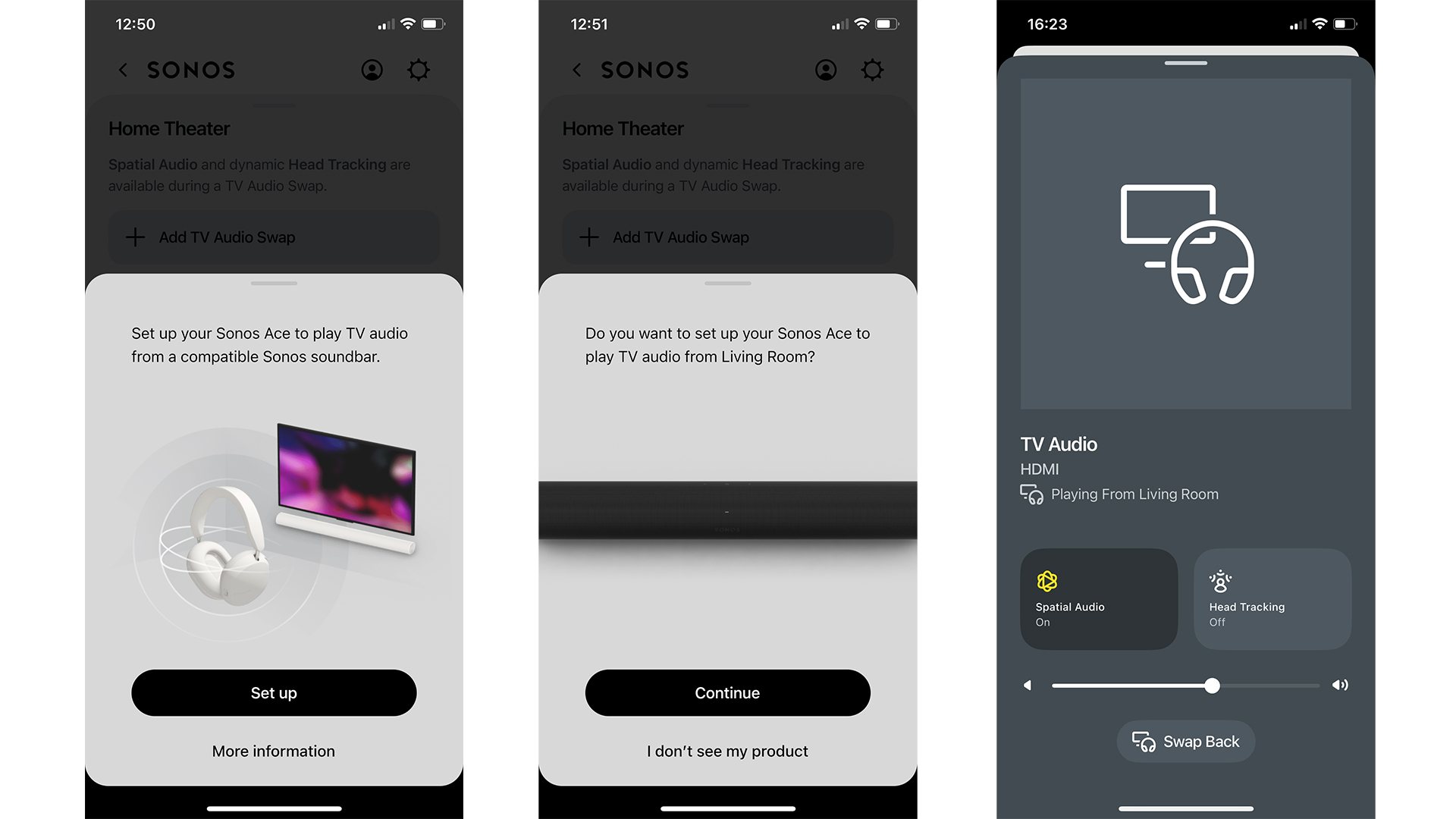
This being Sonos, it hasn’t entirely ignored its extended family. The Sonos Ace headphones can integrate into your Sonos-based home cinema system, with a handy ‘TV Audio Swap’ function and new TrueCinema calibration for a bespoke, immersive Dolby Atmos experience.
The TV Swap feature is available at launch but works only with the Sonos Arc and iOS devices, not Android. It will be compatible with other current Sonos soundbars – Beam Gen 2, Beam Gen 1, Ray – later on. Older models such as the Playbar won’t be supported. Sonos tells us that using Ace with more of its wireless speakers was possible “but not a functionality they are looking at now”.
The feature lets you beam the sound from your Sonos soundbar to the Sonos Ace headphones with one button press, and vice versa. This means you can listen to movies and TV shows privately at night without disturbing the rest of your household, or if you want to watch Succession in peace without subjecting young ones to all the swearing.
During testing we have the Arc running with a Samsung S95D TV and Panasonic DP-UB820EB 4K Blu Ray player. Top Gun: Maverick is our test disc of choice. Swapping from the soundbar to the Sonos Ace using the content key is generally instant and seamless. However, our experience isn’t completely smooth sailing.
There are a couple of occasions when switching to the headphones that the sound distorts and crackles. It’s as if the two devices haven’t quite locked on to one another. On one occasion, we wait around seven or eight seconds for the signal to become stable, on another it is just a couple.
We also experience a couple of lip-syncing issues. Sometimes they were quite obvious while at other times pictures and sounds were only a fraction out, but enough to register with your brain. Disconnecting the headphones completely and reconnecting seems to clear things up, but it’s not ideal. Hopefully, this is just a teething issue that can be ironed out via a firmware update.
Another new home cinema feature is the TrueCinema calibration, which uses new software to tailor your headphones’ acoustics to your room, bringing a more spatial and immersive experience when watching Dolby Atmos soundtracks via a Sonos soundbar and TV system.
The idea is to not feel like you’re wearing closed-back headphones, with the sound tailored to your room the way your Arc is calibrated to your room’s acoustics. The only downside is that TrueCinema isn’t available at launch but should arrive later this year. Normal spatial audio is available.
Sonos confirmed that the Ace’s 30-hour battery will drain faster when connected to the Arc, but assures us it should last two nights in a row of movie-watching. Switching back to using the headphones with your smartphone or portable device will revert back to the standard Bluetooth connection.
Noise-cancelling & Call Quality
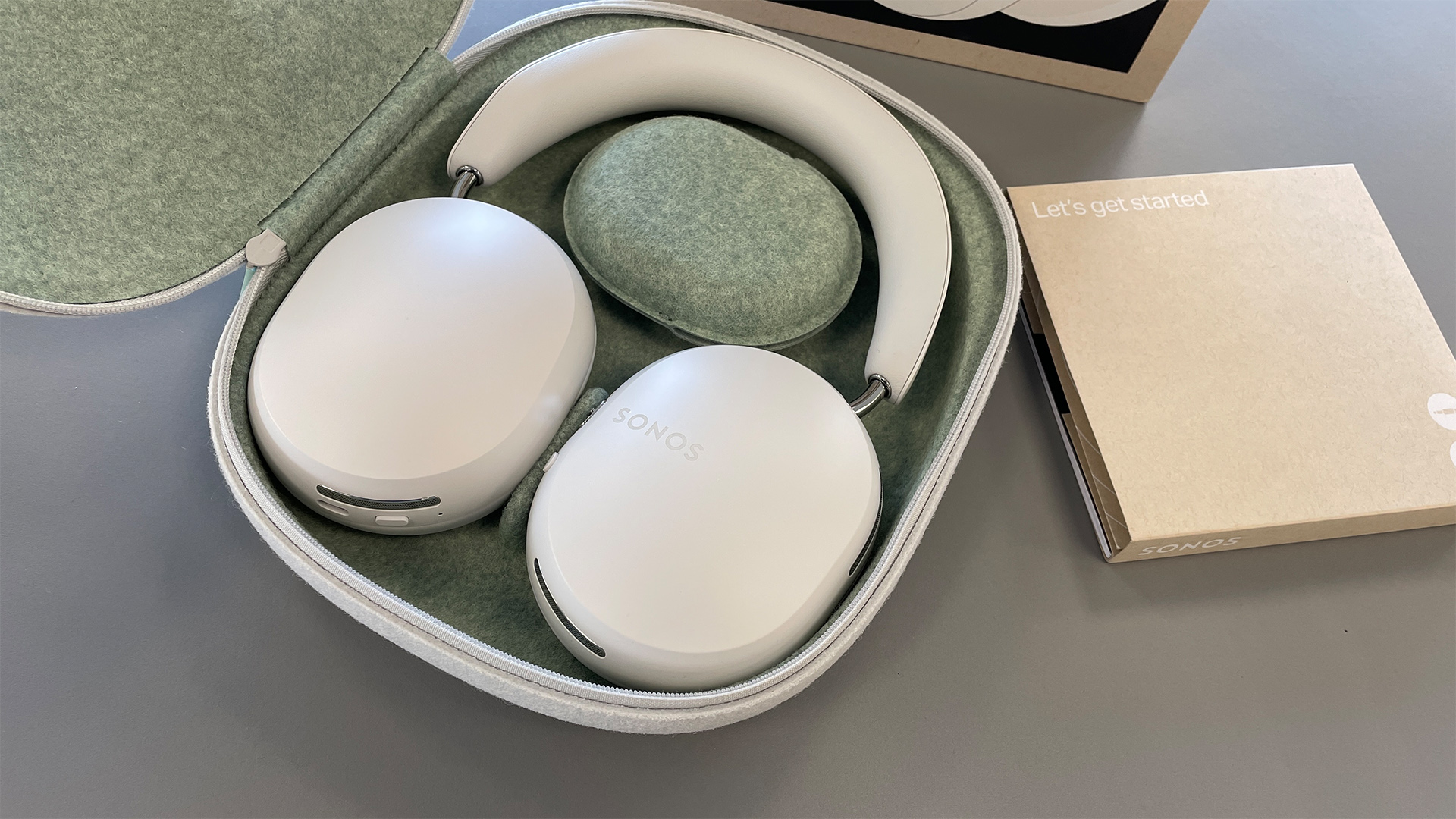
The Sonos Ace use eight mics in total – four in each cup – that are used for ANC and to deliver clear voice quality for calls. During testing, which happened in a range of environments from the train to the London Underground to a busy pub environment, we found noise cancelling to be okay, but not up to the standards set by the Sony WH-1000XM5 and the Bose QuietComfort Ultra Headphones.
The Ace throw a blanket over loud background noise, but frequencies still creep in that are kept out by the very best. Rival pairs boast more sophisticated ANC, resulting in a quieter and cleaner-sounding background for you to enjoy whatever’s playing. With the Ace, it feels as though more details are bleeding in.
We also find the Ace struggle to impress when it comes to call quality. On a relatively blustery day, our voice sounds quite muffled, and there’s quite a lot of variation in background noise depending on whether we are static or walking around.
The Sony WH-1000XM5, by contrast, have much more of a handle on interference from the outside world. Our voice sounds more consistent when moving around and they do a better job of suppressing general noise and controlling the impact of wind noise.
Sound
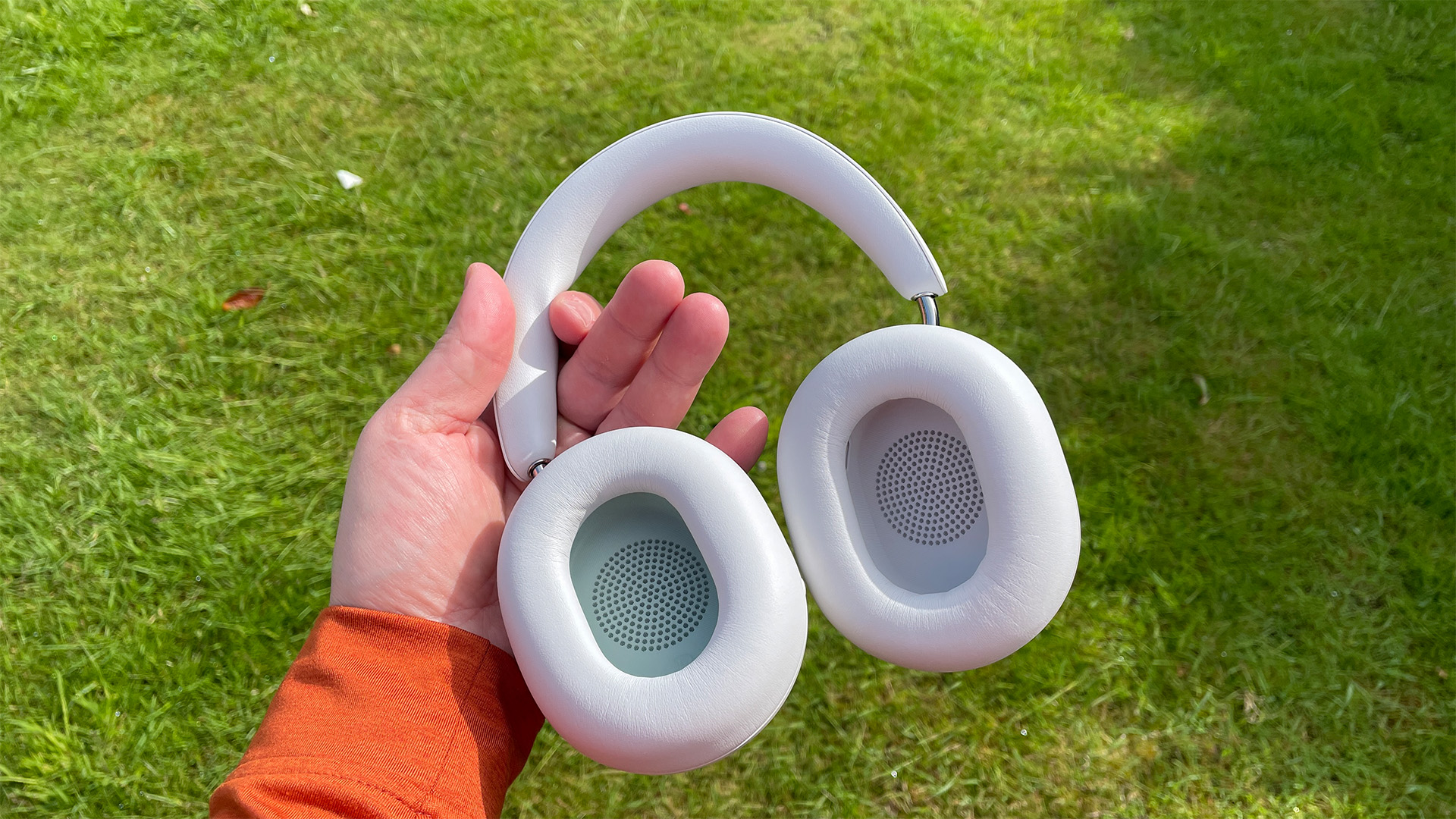
We start proceedings with the playful, poppy tones of Taylor Swift and Shake It Off. In isolation, the Ace get off to a solid start. They produce a perfectly listenable and inoffensive sound.
The drum kick lays down the track’s beat with decent weight and solidity. It doesn’t overpower her vocal or stick out from the rest of the track. You can still hear other elements such as the trumpet and the claps which sound rich and devoid of any hard edges.
But it’s quite a simplistic and safe sound – not one we would call exciting or enthralling. It’s also very congested and there’s a real lack of spaciousness. Rivals draw a clearer distinction between the saxophone line, the claps, the drums and Swift’s vocal. Through the Sonos Ace, everything sounds a little blurry and confused. Rivals such as the AirPods Max, Sony XM5 and Bose QC Ultra Headphones, in the words of Swift herself, never miss a beat.
The Sonys are looking at the track through a much clearer lens. Where the track stops and starts, the Sonys make a definitive pause and the song has more of a distinct flow. They track rhythms much more closely and accurately. Dynamically they’re more communicative and immediately you’re in excited foot-tapping mode, whereas the Sonos have real trouble keeping up and struggle with the natural flow of the song.
Detail levels are okay, but once again, all key rivals take things up a notch. The Bose headphones sound bolder and more powerful, especially in the bass. The Apple and Sony rivals once again just give you more across the board. Vocals gain a newfound sense of expression both in terms of detail and dynamics. Both of these pairs do a much better job of drawing you in and holding your attention. In comparison, it feels like the Sonos Ace lose quite a lot in translation. Turning ANC off reduces the compressed, congested delivery somewhat and shows just how much heavy processing the Ace are actually doing.
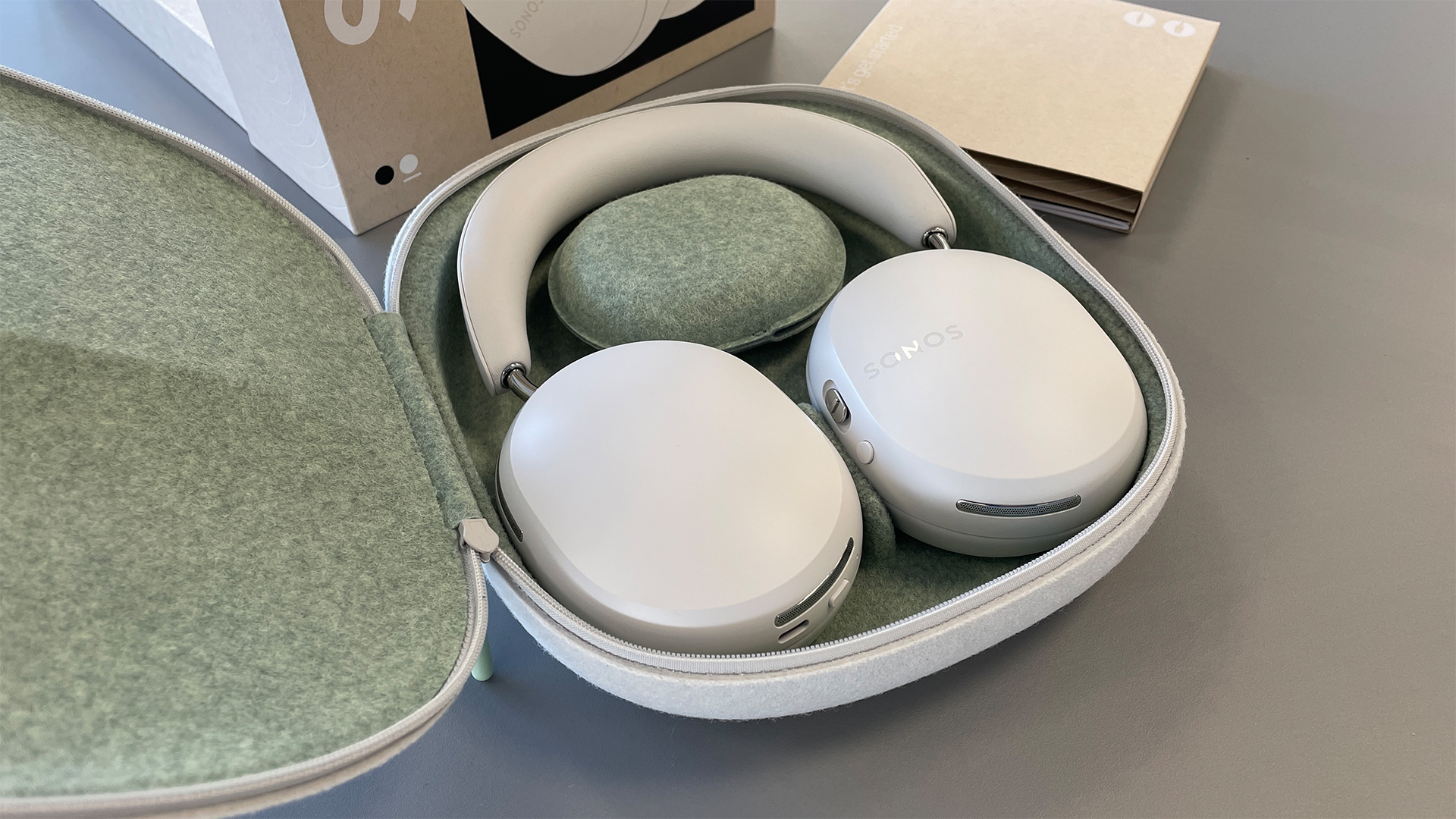
We switch to Time from the Inception soundtrack. It’s a great slow-burner with a beautiful build-up thanks to the drawn-out, elegant strings, subtle heartbeat-esque bass and delicate piano play. It’s an emotive piece of music, but listening through the Sonos Ace, your emotions aren’t stirred. The crescendo is handled well, though, and it doesn’t feel like the bass is lacking as the headphones deliver those swells of low frequencies in the track.
But through rival pairs, you really get to savour the slow build and those low-level dynamics just as much as the big ending. The Sonos skip over the finer details and, as we said, simply don’t stir the emotions like the very best pairs do.
We finish our testing listening to Top Gun: Maverick through the Sonos Arc via the TV Swap feature. Without spatial audio, the movie soundtrack sounds weighty and solid through the Ace headphones, and in keeping with the general character of the headphones. Dialogue is easy enough to follow, and as the fighter jets joust and duel over the desert, the sense of power on display as they fire up the afterburners is reasonably well conveyed.
Switch spatial audio on and you do feel the soundfield open up. SPOILER ALERT – as the jets fly over Iceman’s funeral there’s a subtle shift in height as one jet flies overhead and slightly in front of the rest of the pack. As they split formation, the trail of lingering noise from the engines feels like it does hang overhead more.
When the pilots are training for their main mission, the sense of atmosphere created in spatial audio does feel a bit more immersive and layered. The dramatic orchestral score provides the foundations with the dialogue in the middle of the mix and the manoeuvres of the fighter jets layered on top and positioned more around the top of your head.
When the jets fly across the front of your face, the audio shifts to follow the direction of the travel and the noise varies in loudness and intensity as the planes roll in and out of view. Does it sound better than listening in the standard mode? It certainly feels different and more spacious, and we can see it appealing to those who want to watch movies late at night. This makes us wonder how the experience will be affected by Sonos’s TrueCinema setting, but we’ll have to wait until that feature rolls out later in the year. We know just how good Sonos’ soundbars are at creating an immersive viewing experience using Atmos, so we have high hopes.
Verdict
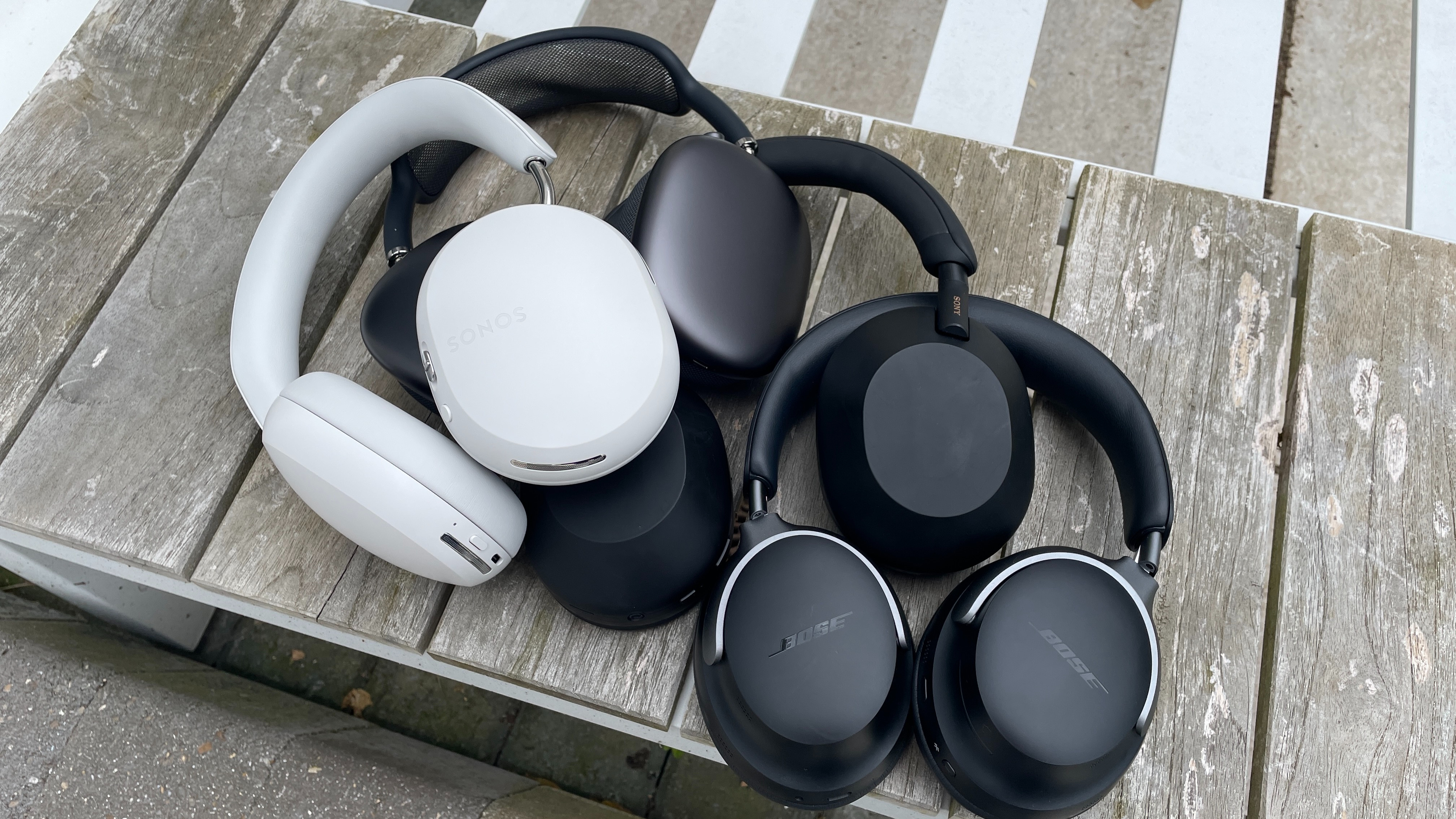
Launching the Sonos Ace into a hugely competitive market with a hefty price tag and no track record in making wireless headphones was always going to be quite a gamble.
As we’ve touched upon, the amount of five-star competition at this level is quite ridiculous (in a good way) and this leaves the Ace quite exposed. Their safe sound is put to the sword by headphones that are more exciting, more detailed, dynamic and expressive across the board. Both their ANC and call quality can be bettered too.
But it’s not all bad news. They’re stylish, relatively comfortable, easy to use and the extra functionality for Sonos customers is a nice touch, even if it doesn’t go as far as some Sonos fans will want. The TV Swap feature shows promise, and TrueCinema sounds like it has the potential to add an extra immersive element. But for TV Swap to work only with the Arc at launch and for TrueCinema not to be ready are two big misses when the Ace needed to stand out from the crowd from day one.
There are the makings of a decent pair of headphones here, but if Sonos is to be competitive in the market, future models will need to up their game.
SCORES
- Sound 3
- Features 4
- Comfort 4
MORE:
Read our review of the Sony WH-1000XM5
Also consider the Bose QuietComfort Ultra Headphones
Read our Apple AirPods Max review
6 sound settings you shouldn’t ignore on the Sonos Ace wireless headphones
Our pick of the best noise-cancelling headphones

